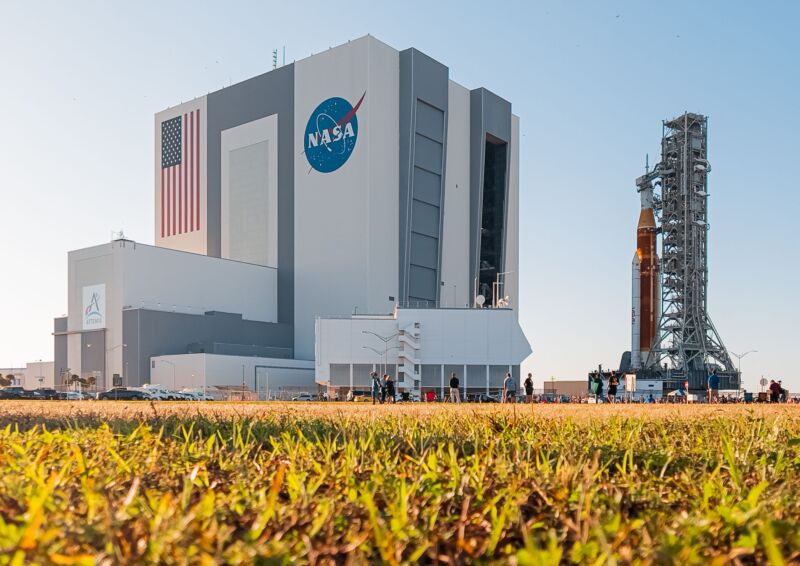
NASA decided to take a break after three attempts to complete a critical fueling test of the Space Launch System rocket.
On Saturday night, the space agency announced that they were going to roll the large SLS rocket from the launch pad at Kennedy Space Center to the Vehicle Assembly Building. This is a notable step back for the program, which has tried since April 1 to complete a wet dress rehearsal test, during which the rocket is fueled and brought to within 10 seconds of launch.
The decision came after three tries. Each attempt was stopped by a technical issue with the rocket, mobile launch tower, or ground systems that supply propellants and gases. NASA was able to load 49 percent of the core-stage liquid oxygen fuel tank and 5 percent of the liquid hydrogen tank during the most recent attempt.
This does not include the most dynamic portion of the test, during which the rocket is fully fueled and pressurized, and the ground systems and computer systems are put into a terminal countdown when every variable is closely monitored. When the rocket is rolled out later this year for its actual launch, NASA wanted to complete this wet dress rehearsal test to make sure the launch system works well.
AdvertisementNASA and its contractors will use the next several weeks to address problems that arose during the fueling tests when the SLS rocket returns to the large Vehicle Assembly Building. Air Liquide will upgrade its capabilities. NASA will replace a faulty check valve on the upper stage of the rocket, as well as fix a leak on the mobile launch tower'stail service mast umbilical, a 10-meter tall structure that provides propellant and electricity lines to the rocket on the ground.
There was no information about schedule impacts in the space agency announcement. It is likely that it will take a week or so to prepare and roll the SLS rocket back to the Vehicle Assembly Building. Most of May will be spent on work on the rocket at that location.
NASA will have to make some difficult decisions. It could roll the rocket and its mobile launch tower to the pad a second time and try again to complete the wet dress rehearsal test. After rolling the rocket back to its assembly building, NASA would take it to the launch pad for a third time to put the flight safety system in place. August is the earliest the SLS rocket could launch, but a fall liftoff is more likely.
If NASA can complete a wet-dress test on the pad and then launch within a few days, they could do another option. NASA might be able to launch the SLS rocket in June or July due to the flight safety system.
AdvertisementThe flight safety system will be armed in 20 days, according to the Artemis Launch Director. Orbital rockets use a range safety mechanism that destroys the booster if it strays off course. It will take about a week to make final preparations in the Vehicle Assembly Building and a week to prepare for the launch. It would take just a single week for a fueling test, recycling of commodities, and maybe one or two launch attempts before the 20-day window closes.
The launch attempt would need to be flawless as well, since the wet dress test would have to be nearly flawless. It would mean that summertime weather in Florida would have to cooperate.
NASA engineers have to consider a number of other factors, such as the wear and tear on the rocket, its side-mounted boosters being exposed outside, and seemingly innumerable lifetime considerations with the hardware. Agency officials are keeping a close eye on the health of the fuel in the solid-rocket boosters, which were stacked about 16 months ago.
NASA is confident that it will get through the teething process for the SLS rocket, which is a program that is 11 years old and has invested more than $30 billion in the rocket and ground systems now being tested.
There is no doubt in my mind that we will finish this test campaign, and we will listen to the hardware, and the data will lead us to the next step. There is no doubt in my mind that we will finish the test campaign and be ready to fly.